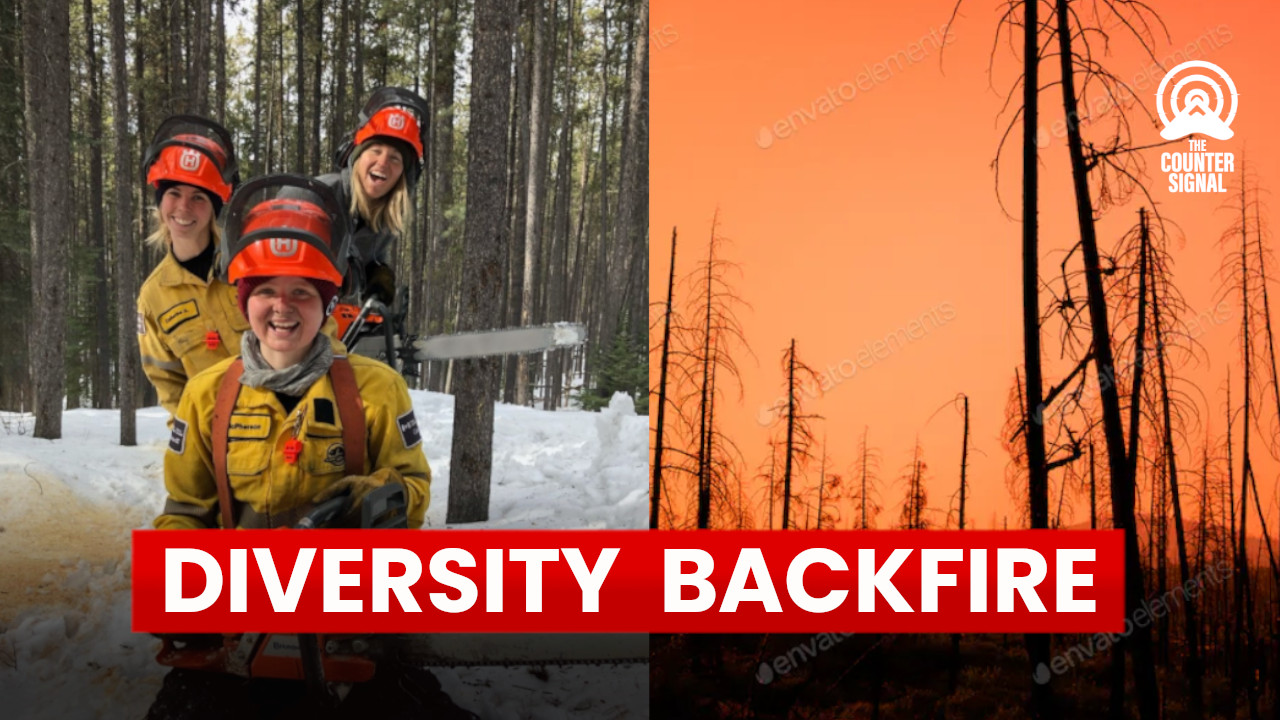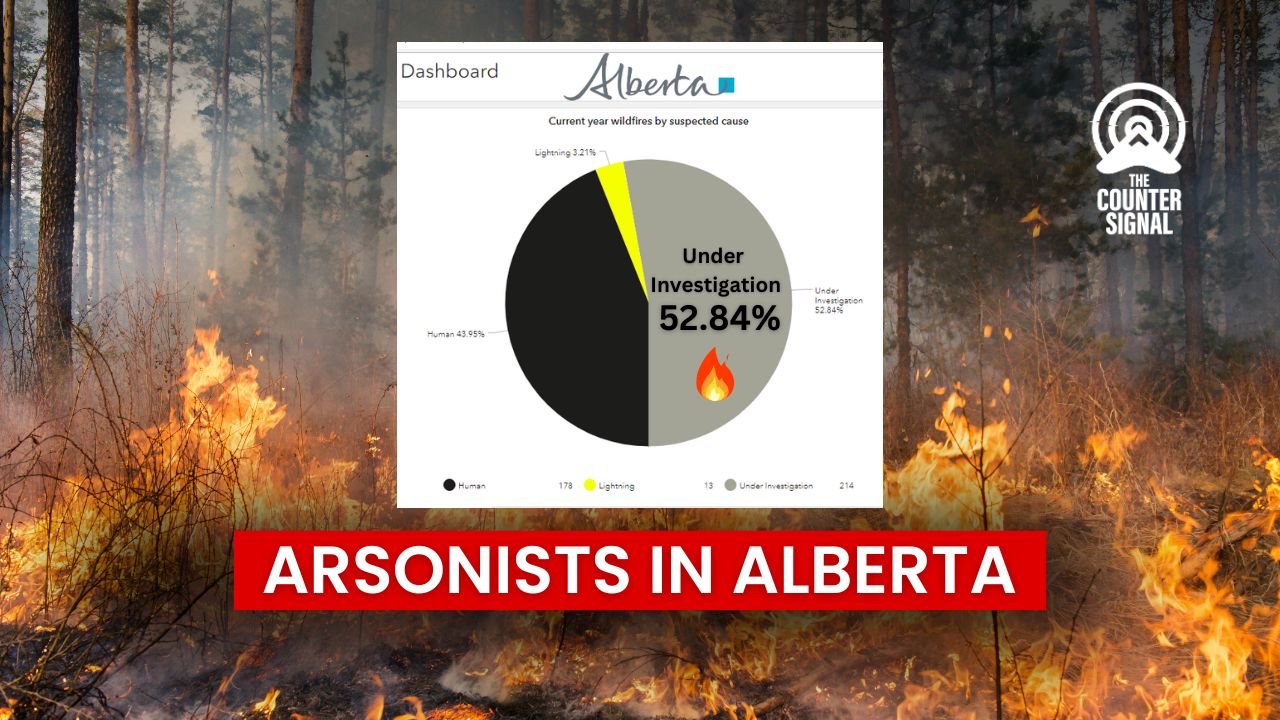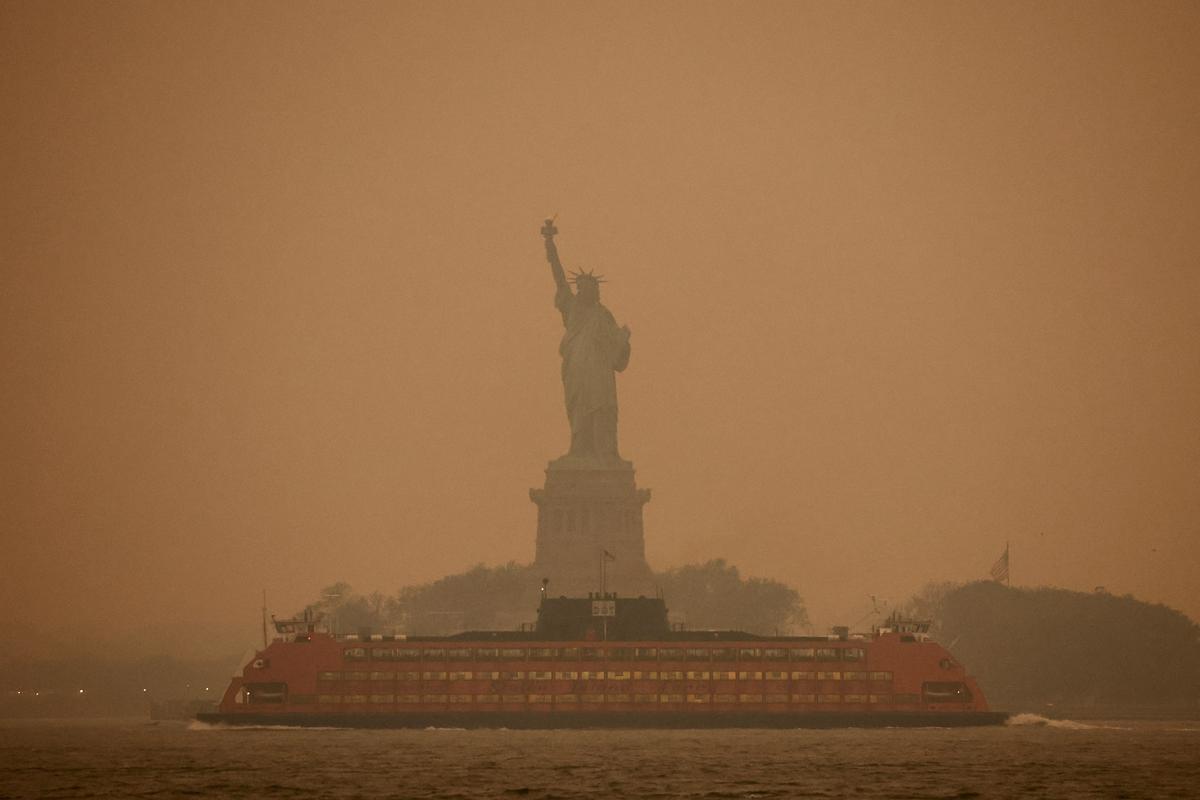
What sparked the Canadian wildfires wreaking havoc across the US?
Wildfires are blazing across Canada, from British Columbia in the west to Ontario in the center of the country and Quebec to the east. An abnormally dry winter is a key factor.
- An unusually dry winter with abnormally low levels of snow has sparked an extremely early start to Canada's wildfire season
- More than 1,400 percent of the normal amount of acres has burned for this time of the year - 8.7 million acres so far in 2023, an area the size of Vermont
- Currently fires are blazing across six of Canada's 13 provinces and territories, from British Columbia to Alberta, Ontario and Quebec
Now, many have argued that the blazes and ensuing smoke-choke could have been avoided with better forest management.
They say too few controlled burns are being performed to clear the forest of flammable surplus
n 2020, four scientists wrote a paper published in Progress in Disaster Science in which they said not enough money was being spent by Canada on managing forests.
'Wildfire management agencies in Canada are at a tipping point,' they wrote. 'Presuppression and suppression costs are increasing but program budgets are not.'
In July 2021, the editorial board of Canada's Globe and Mail newspaper warned that more needed to be done to hold controlled burns, and reduce the problem of out-of-control wildfires.
But others say that climate change is directly responsible, due to the warming planet.
Canada had an extremely dry and snow-free winter, which has left all 10 provinces currently facing conditions termed abnormal dryness, moderate or severe drought, according to the Canadian government's drought tracker.
In June 2021, Canada experienced its hottest day ever when the town of Lytton, in British Columbia, hit 121 degrees Fahrenheit, smashing the previous record of 113 degrees.
It tied California's Death Valley as the hottest place in North America that day. And this year, the wildfire season has begun incredibly early.
More than 1,400 percent of the normal amount of acres has burned for this time of the year - 8.7 million acres so far in 2023, an area the size of Vermont. In an average year, 6.2 million acres will burn due to wildfires.
Dry, hot weather also breeds more lightning. Half of Canada's wildfires are started by lightning; the other half by humans.
Lightning-sparked fires are more destructive than human-caused, however: they account for more than 85 percent of wildfire destruction.
Justin Trudeau, Canada's prime minister, tweeted: 'This wildfire season has already been devastating for communities across the country.
'We're taking action to keep people safe, to support those affected, and to make sure the provinces and territories have the assistance they need.'
Huge swathes of Alberta, Ontario and Quebec are currently ablaze, as well as British Columbia.
On Wednesday, Joe Biden said that the United States was sending firefighters to help.
'We've deployed more than 600 U.S. firefighters, support personnel, and equipment to support Canada as they respond to record wildfires – events that are intensifying because of the climate crisis,' he tweeted.
Donald Trump repeatedly blamed wildfires on poor land management rather than seeing it as an effect of climate change.
Wildfires are not started by climate change, and naturally occur. But the changing climate, with drier conditions, provides more kindling and makes their impact more severe.
Some scientists believe rising global temperatures can affect the jet stream's flow, making it weaker. That allows air to sit stagnant for longer, and heat up.
Canada's natural resources agency says climate change could potentially double the amount of area burned by the end of this century.
For Canada, that means a possible problem for the timber industry, as well as destruction of valuable ecosystems.
The Canadian government on Monday said the outlook for the rest of 2023 was deeply troubling, with the fires expected to worsen.
'Current June projections indicate the potential for continued higher-than-normal fire activity across most of the country throughout the 2023 wildland fire season due to ongoing drought and long-range forecasts for warm temperatures,' they said.
'For June, warm and dry conditions will increase wildfire risk in most of Canada from British Columbia and Yukon eastward into western Quebec and the Atlantic region.
'During July, wildfire potential is expected to expand into Yukon, although the eastern edge will recede from western Quebec into central Ontario.'
Dramatic time-lapse shows wildfire smoke consume the NYC skyline - as cities from Chicago to DC are engulfed in toxic cloud that has prompted stay-at home warnings for MILLIONS
An incredible time-lapse video shows the moment that New York City became engulfed by glowing orange smog caused by 400 Canadian wildfires.The footage shows a view of the World Trade Center in downtown Manhattan slowly becoming almost impossible to see over four hours.
Images initially show a grey and slightly opaque smoke over the city, which quickly descends into a bright orange haze from 11am to 2pm on Wednesday.
A sheet of smoke from the wildfires first descended on New York on Tuesday before thickening throughout the afternoon.
It quickly left those in Manhattan unable to see the New Jersey skyline across the Hudson River - sparking air quality alerts in Massachusetts, New Hampshire, Pennsylvania, Maryland, Illinois, Virginia and the Carolinas.
In the Big Apple, Mayor Eric Adams urged people to stay inside as the smog hit, as the FAA grounded flights from LaGuardia Airport and Newark Airport.
Adams urged vulnerable residents to be cautious amid the crisis, as he also blamed climate change for the yellow skies.
'This may be the first time we've experienced something like this on this magnitude,' he said. 'Let me be clear, it's not the last.'
Residents in Washington reported seeing a grey veil shrouding the city on what should have been a blue-sky day.
Those in DC will see the smog hang around for a few more days, with pupils in schools being told to remain indoors throughout the day.
A school administrator in Chevy Chase said: 'Many staff and parents are concerned about the wildfires in Canada and the resulting poor air quality that we are experiencing here.'
High ozone levels in Chicago, combined with the smoke from the wildfires, which led to air quality alerts on Monday, with the smoke across the city dissipating slowly by Wednesday.
The Chicago White Sox still traveled to the New York Yankees for a game in the Bronx, with many describing the scenes as post-apocalyptic.
The smoke that hit Philadelphia is likely to remain due to the persistent wind blowing through the north, with the air quality alert hitting a 'Code Red'.
Smoke from a fire in the Bass River State Forest last week and another in Nova Scotia also blew down smog, which has now combined with the 400 wildfires to cover the area.
Tuesday night, local 911 centers received calls from residents who reported smelling smoke and others who reported respiratory distress.
As of Wednesday Morning, Detroit had the second-worst air quality on Earth, before being overtaken by New York.
But by the afternoon the air quality was improving – as Detroit had dropped to the No. 13 worst air quality in the world











